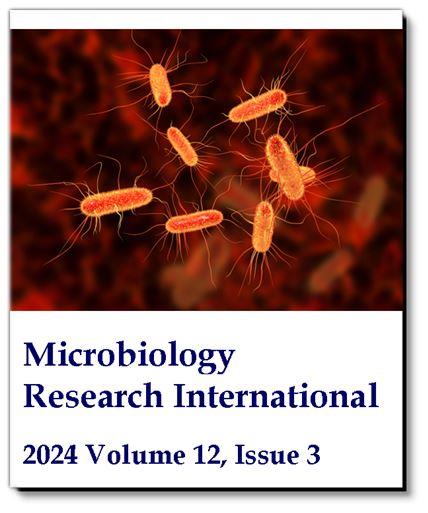Virulence and multidrug resistant Salmonella enterica isolated from Cardisoma armatum and Mercenaria mercenaria sold in Port Harcourt, Nigeria
Barika P. N., Chibuike P. M., Okpokiri M. and Wikimor D. D.Microbiology Research International
Published: July 12 2024
Volume 12, Issue 3
Pages 65-72
Abstract
Cardisoma armatum (crab) and Mercenaria mercenaria (clam) are highly esteemed sources of protein globally, cherished for their nutritional value. However, the consumption of contaminated seafood can pose severe health risks. Salmonella enterica is a significant concern due to its propensity to cause foodborne illnesses. This study aimed to determine virulence and multidrug resistant Salmonella enterica isolated from Cardisoma armatum and Mercenaria mercenaria sold in Port Harcourt, Rivers State, Nigeria. Eight seafood samples were collected from two different markets, Creek Road Market and Mile One Market, and subjected to standard bacteriological procedures such as culture, isolation and identification. A total of 18 Salmonella enterica were isolated and identified. The results revealed significantly elevated levels of Salmonella enterica in the seafood samples, with notable variations (p≤0.05) across different seafood types. In raw and parboiled crab samples; Total Heterotrophic Bacteria (THB) counts ranged from 5.40±0.28 to 2.15±1.63 (x106 CFU/g); 1.6±0.09 to 1.69±0.62 (x106 CFU/g), Faecal Coliform counts ranged from 6.1±0.86 to 6.4±0.91 (x104 CFU/g); 2.58±1.30 to 3.72±2.38 (x104 CFU/g), and Total Salmonella counts ranged from 3.00±1.69 and 5.00±0.14 (x102 CFU/g) 2.52±2.09 and 2.10±1.56 (x102 CFU/g. In raw and parboiled clam samples in both markets showed Total Heterotrophic Bacteria (THB), counts ranging from 1.98±0.37 to 3.79±2.98 (x106 CFU/g); 1.38±0.43 to 2.21±0.33 (x106 CFU/g), Faecal Coliform Count of 3.50±2.12 to 2.10±0.57 (x104 CFU/g) 0.00±0.00 and 3.75±1.77 (x104 CFU/g); and Total Salmonella counts between 1.25±0.35 and 3.00±2.83 (x102 CFU/g); 1.13±1.59 to 0.50±0.71 (x102 CFU/g) with significant differences (p≤0.05). All Salmonella enterica isolates were 100% positive for Motility, Starch, Capsule, Protease, and Haemolysin, and 83.3% produced biofilm. Salmonella enterica was more prevalent in raw crab (26.7%) and clam (33.33%) samples when compared to parboiled samples. Salmonella enterica were highly sensitive to Ofloxacin, Gentamicin, Streptomycin, and Ciprofloxacin (88.9%, 88.9%, 94.4%, 88.9%), while they were highly resistant to Pefloxacin and Ampicillin (44.4% and 33.35%), respectively. All Salmonella enterica isolates had a MAR index greater than 0.2. These findings highlight multidrug-resistant Salmonella enterica in Cardisoma armatum (crab) and Mercenaria mercenaria (clam) with high prevalence from these markets, emphasizing the need for improved food safety measures and monitoring due to the potential risk of seafood-borne illnesses and antibiotic abuse discouraged.
Keywords: Cardisoma armatum, Mercenaria mercenaria, multidrug resistance, Salmonella enterica, virulence.
Full Text PDF
